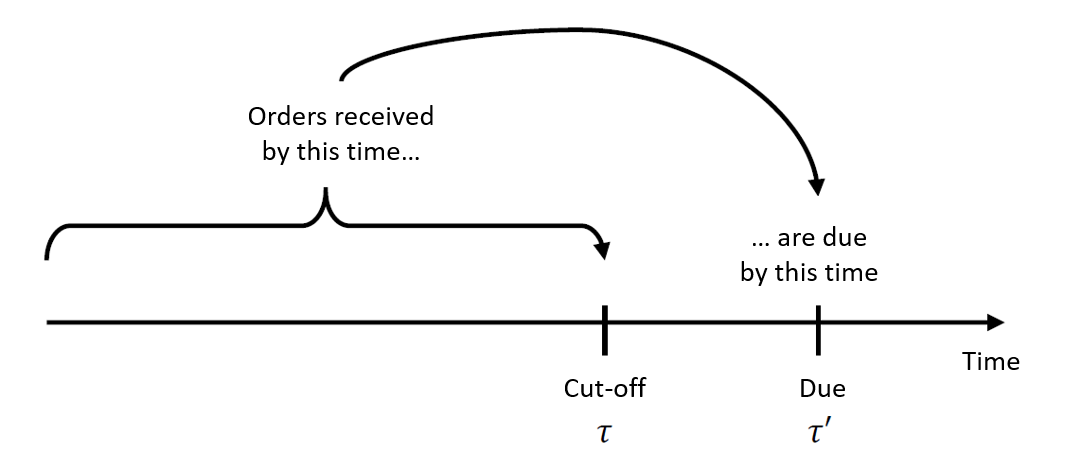Performance analysis and capacity planning for stochastic systems with cut-off service levels
- Contact:
- Project Group:
Department of Logistics Systems
- Funding:
DFG – German Research Foundation
- Partner:
University of Mannheim, Chair of Production Management
The results obtained so far in the project "Resource Scheduling in Multi-level Systems with Time-Dependent Workload" show that the service level measurement type in staff demand and staff scheduling has a significant influence on the structure of the optimisation problems, their solution and the applicable solution methods. All examined service levels measure the order fulfilment related to the end of the planning horizon, e.g. the end of a day.
The service levels used in practice, e.g. in distribution centres of e-commerce providers, are often defined in a more differentiated way. Customers are typically communicated cut-off times by which orders must be received in order for a specific delivery date to be met, e.g.: "If you order by 16:00, you will receive the ordered goods the following day". This service definition thus includes a cut-off time τ and a deadline τ' by which all orders received by the time τ must be completely processed. A service level agreement can consist of several tuples of (τ; τ'). Due to stochastic incoming orders and processing procedures, it cannot be guaranteed that all orders will be fulfilled within the promised time in every case. Service level targets can therefore be defined along the lines of, for example, the α-service level in inventory management as the probability that all orders received by the cut-off time τ will be fully processed by the deadline τ'.

Cut-off time and deadline of the cut-off service levels
Compared to classical service levels with τ=τ', the planning reliability and thus the flexibility of capacity planning can be controlled by varying τ and τ'. The aim of the project is therefore to develop methods for capacity planning taking into account cut-off service levels and to analyse the results that can be achieved with them.
Aims of the research project
Cut-off service levels and their influence on capacity planning, in particular on staff demand and staff scheduling, have not been investigated in the scientific literature so far. Therefore, the overall aim of this research project is to identify and explore the influence of system parameters (e.g. the available processing capacity) on the achievable cut-off service level in order to gain insights into the impact of the cut-off service level on staff demand and staff scheduling.
The analysis of the proposed cut-off service levels is first carried out for single-level systems. For the analysis, the different variants of the cut-off service level for stochastic systems are formally defined and integrated into the formal problem descriptions of staff demand and staff scheduling. Based on the above, suitable analysis methods are developed to identify the relationship between the provided processing capacity, the stochastic parameters of incoming orders and processing and the achievable cut-off service levels. Central properties are derived analytically for special cases.
New solution procedures to be developed for staffing requirements and staff scheduling using the cut-off service levels will make use of the previously gained structural insights. Finally, the developed procedures are transferred to the use in multi-level systems. Structural differences between multi-level staff demand and staff scheduling using classical service levels and cut-off service levels are finally investigated numerically.

